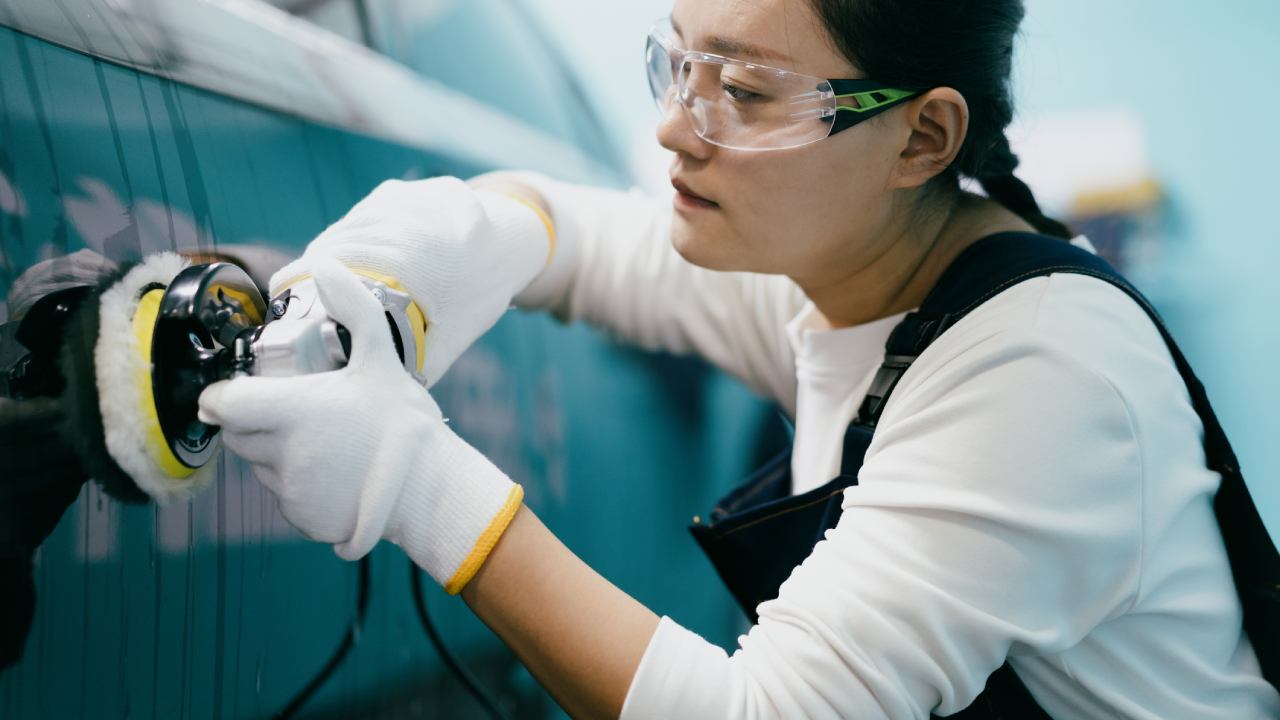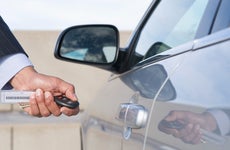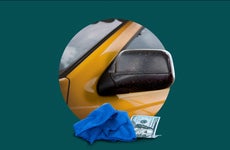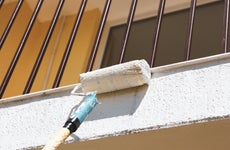How much does it cost to paint a car? And can you save with DIY?

The Bankrate promise
At Bankrate we strive to help you make smarter financial decisions. While we adhere to strict , this post may contain references to products from our partners. Here's an explanation for .
Key takeaways
- Painting your car can range from just a few hundred dollars to over $20,000. The price you pay depends on factors like size, paint type and the shop you go to.
- Pricing factors include the size of the vehicle, the type and color of paint, and the extent of any additional repairs needed.
- DIY car painting may be cheaper, but it requires a certain level of skill and experience and can result in additional costs if not done properly.
Our writers and editors used an in-house natural language generation platform to assist with portions of this article, allowing them to focus on adding information that is uniquely helpful. The article was reviewed, fact-checked and edited by our editorial staff prior to publication.
Whether you’re touching up a few dings or planning a complete color change, painting a car can dramatically alter its look. It may increase its resale or trade-in value.
However, the cost of painting a car is highly variable. It’s influenced by factors such as the vehicle size, the type and color of paint, and whether you opt for a DIY or professional approach.
How much is a paint job on a car?
The cost of painting a car varies depending on the quality and type of paint job. Touch-ups can range from $300 to $1,000, while more standard paint jobs, which may involve sanding the body and removing rust before painting, can cost between $500 to $5,000. If you’re seeking a showroom-quality finish, the cost can run anywhere from $2,500 to over $20,000.
What factors affect the cost of painting a car?
As with most vehicle add-ons, many factors influence the total price of painting your car.
- Size: Painting the body of a large SUV will cost more than painting that of a smaller coupe.
- Paint color: Painting your car a basic color such as white or black will be cheaper than a less common color.
- Paint type: The price range for one coat of synthetic enamel paint is anywhere from $300 to $700 for an average-sized sedan, according to J.D. Power. High-quality paint, on the other hand, may cost several thousand dollars.
- Paint finish: Paint finish refers to the amount of shine that the paint has. Prices vary for matte, gloss or semi-gloss finishes. Paint finish costs may also include adding a coat of wax or seal your car’s paint job. The cost of a regular wax is about $100 to $200. A specialized ceramic coating will be more expensive.
- Caliber of body shop: Through research, you may come across very inexpensive paint jobs, but beware. Price and quality of work often go hand-in-hand. Unlike the cheapest car loans, the cheapest paint job might not be your best option.
How do additional repairs influence the price?
Additional repairs, such as fixing dents or rust spots, can significantly increase the cost of a paint job. These issues must be addressed before the new paint is applied for a smooth and durable finish.
If your car requires extensive prep work, you can expect to pay more for your paint job.
DIY vs. professional paint jobs: Which is more cost-effective?
When deciding between professional or DIY painting, consider your purpose for painting. Do you want a quick cosmetic fix before selling the vehicle, or are you working on a restoration passion project?
It’s possible to paint your own vehicle. But it involves patience, skill and a range of paints and tools you may need to purchase. And your results may be imperfect. Do-it-yourself paint jobs are best suited for older or all-terrain vehicles that frequently pick up scratches.
For people looking to restore a family vehicle or collector’s car to its original condition, it’s usually a better idea to go to a shop. Professionals can apply many even coats of paint for a high-gloss, durable finish.
Professional auto painting costs
Many body shops offer multiple levels of service for customers with different budgets.
- Basic: The most inexpensive paint job involves as few coats as possible, using synthetic enamel paint. For the basic job, the painters are unlikely to paint areas that are not normally visible, such as the inside of the hood. Basic costs range from $300 to $1,000.
- Standard: The cost of a standard paint job usually includes sanding the body and removing rust before painting to get an attractive finish. Standard costs range from $500 to $5,000.
- Showroom quality: This process involves sanding the bodywork down to the bare metal, removing all the rust and dents and then applying up to 24 coats of high-quality paint. The project may take up to a month, and the showroom-quality costs can run anywhere from $2,500 to as high as $20,000 in some cases.
DIY auto painting costs
For older vehicles, the cost of a professional paint job may be excessive. In these cases, you may wish to try painting the vehicle yourself. The necessary materials are widely available from hardware and automotive stores for as little as $200. Required materials and tools include:
- Paint.
- Primer.
- Foam brushes.
- Paint trays.
- Masking tape.
- Sandpaper.
- Mineral spirits for cleaning.
One of the biggest challenges is finding a place to paint the vehicle. Many professional painting and body shops have climate-controlled booths. These limit the dust and dirt that might come into contact with the paint and ruin the finish.
For a DIY project, your best option is to paint the vehicle in a clean, well-ventilated garage.
The bottom line
When shopping around to have your car painted, remember many factors will ultimately influence the cost, including the paint’s color and finish. Your vehicle’s size also plays a role.
Though you may be tempted to go for the lowest price possible, remember the final look of the paint job may suffer. You may end up with paint that doesn’t last as long or key details may be ignored or overlooked. As you would when shopping for an auto loan, carefully review what’s included before making a final decision.
Related Articles



